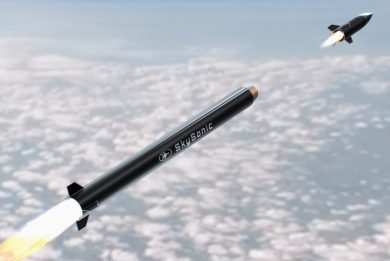
DARPA: Final Flight of HAWC Program Screams Through the Sky
1/30/2023 – The joint DARPA and U.S. Air Force Hypersonic Airbreathing Weapon Concept (HAWC) completed yet another successful flight test. The Lockheed Martin version of the missile, with its Aerojet Rocketdyne scramjet, capped a program that accomplished all of its initial objectives. It was the final flight test for HAWC, which is providing critical data to inform Air Force Research Laboratory (AFRL) hypersonic technology maturation efforts.
“This month’s flight added an exclamation point to the most successful hypersonic airbreathing flight test program in US history,” said Walter Price, an Air Force deputy for the HAWC program. “The things we’ve learned from HAWC will certainly enhance future U.S. Air Force capabilities.”
The Lockheed Martin missile again flew at speeds greater than Mach 5, higher than 60,000 feet, and farther than 300 nautical miles. This latest flight demonstrated improved capabilities and performance. The nation’s hypersonic portfolio now has two feasible hypersonic airbreathing missile designs (Lockheed Martin and Raytheon) to improve and mature in the future.
“The HAWC program created a generation of new hypersonic engineers and scientists,” said Andrew “Tippy” Knoedler, the HAWC program manager. “HAWC also brought a wealth of data and progress to the airbreathing hypersonic community. The industry teams attacked the challenge of scramjet-powered vehicles in earnest, and we had the grit and luck to make it work.”
Even though the HAWC program has executed the final phase of the program, there is still data to analyze and more opportunities to mature the technology. DARPA plans to continue that maturation in the More Opportunities with HAWC (MOHAWC) program by building and flying more vehicles that build upon HAWC’s advances. Those missiles will expand the operating envelope of the scramjet and provide technology on-ramps for future programs of record.
“We had our share of difficulties,” said Knoedler. “Through a pandemic, a strained supply chain, and atmospheric rivers, our industry partners forged ahead, mitigating the risks where they could and accepting others. They delivered on their promises, proving the feasibility of the concept.”
Image courtesy DARPA



